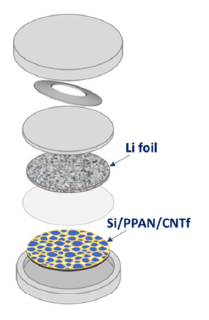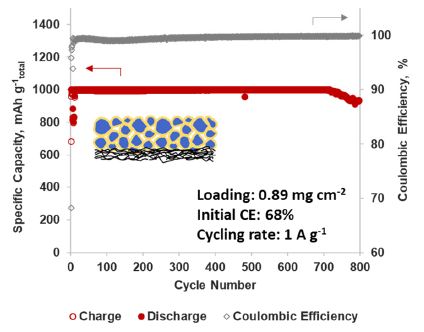Patent details
Status
US patent application filed, PCT extension.
Inventors
(IMDEA Materials Institute): Afshin Pendashteh and Juan José Vilatela García.
Application number
63/625,641, PCT/US25/13097
Applicant
William Marsh Rice University and IMDEA Materials Institute.
Priority date
26/01/2024
Transfer opportunity
License of technology
Summary
A self-standing lithium-ion battery (LIB) anode that replaces heavy copper current collectors with ultralight, nonwoven carbon-nanotube fabrics (CNTf), combined with a high-capacity silicon/pyrolyzed-polyacrylonitrile (Si/PPAN) active matrix. The resulting Si/PPAN/CNTf composite (Figure 1) achieves 1,000 mAh g⁻¹ (by total anode mass) at 1 A g⁻¹ for over 700 cycles, while slashing inactive mass. Modelling predicts a ~25 % cell-level energy density boost with commercial cathodes, transforming next-generation high-energy LIB design.
Advantages and Innovations
- Elimination of Heavy Collectors: replaces 8.6 mg cm⁻² Cu foil with 0.14 mg cm⁻² CNTf → ∼98 % reduction in inactive mass.
- Extended Cycle Life: Maintains 1,000 mAh g⁻¹ (total mass) at 1 A g⁻¹ for >700 cycles; Coulombic efficiency >99.5 %. (Figure 2)
- Mechanical Integrity: Cross-section SEM/EDX and peel tests reveal robust Si/PPAN–CNTf adhesion (~3.5 N m⁻¹).
- High Effective Rates: Stable performance up to 6 A g⁻¹; rapid recovery upon rate reduction.
- Scalable & Green: FC-CVD CNTf and spray-coating are roll-to-roll compatible. CNT replacement of Cu may drastically cut CO₂/yr from LIB manufacturing.

Figure 1: Schematic of coin-cell assembly against Li electrode using Si/PPAN/CNTf anodes.

Figure 2: Electrochemical cycling of Si/PPAN/CNTf half-cells with Li. Capacity control cycling at 1 A g-1.
Contact
Technology Transfer and Innovation Office, IMDEA Materials Institute
Email: techtransfer@imdeamaterials.org
Telephone: +34 915 493 422
